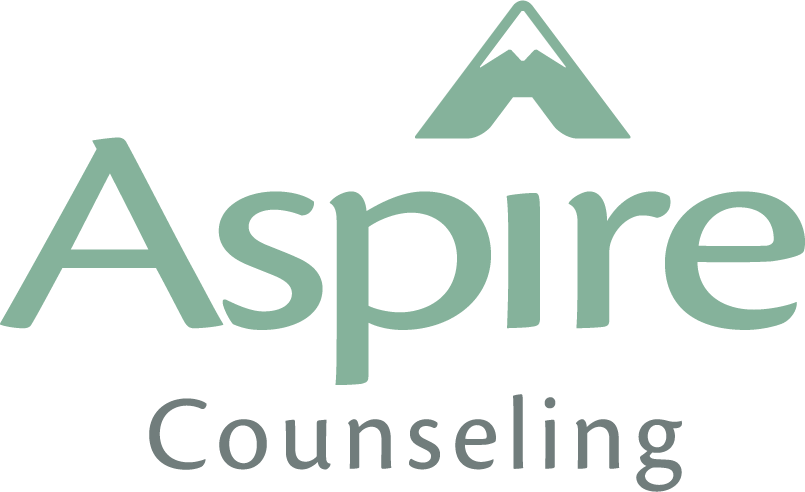What is Resourcing in EMDR?
Starting therapy, especially Eye Movement Desensitization and Reprocessing (EMDR), is a significant step on the journey toward healing and emotional well-being. Here at Aspire Counseling, our EMDR therapists understand the importance of preparing our clients for this intense process.
In our latest blog series, we are trying to answer all of the common questions about EMDR. As we’ve offered EMDR now for several years as we offer counseling near Blue Springs, MO and in Columbia, MO as well as online in Missouri and we’ve found that people often have a lot of questions about EMDR when they first begin, such as “what is EMDR?” or “What is bilateral stimulation and how can it be used in EMDR therapy”, or even “what is resourcing, and what can EMDR do for me in therapy?”. Today, we’re going to focus on one of those things you may have questions about. Resourcing is a concept that seems a little different to people at first.
However, “resourcing” is a crucial part of EMDR and one of the things we focus on most early in treatment. So, it’s a helpful part of treatment to learn a little bit about as you’re getting started. This blog aims to explain what resourcing is, how it's used, and why it's so important in your therapy journey.
Understanding Resourcing in EMDR
Resourcing in EMDR therapy is the process of developing internal coping mechanisms to help manage emotional distress. It’s like packing a survival kit before embarking on a challenging hike; you equip yourself with the necessary tools to handle difficult situations safely and effectively. EMDR uses this concept to prepare you for addressing and processing traumatic memories.
The Role of Resourcing
The main goal of resourcing is to ensure that you feel safe and stabilized before moving into deeper, potentially more disturbing memories. It’s essential for clients, especially those dealing with significant trauma, to have a strong foundation of resources. These resources help maintain emotional balance and provide a way to calm the nervous system during and outside of therapy sessions.
Types of EMDR Resources
Photo by Kier in Sight Archives on Unsplash downloaded 8/6/24
The Container Exercise: One common resource used in EMDR is the "container" exercise. This technique involves visualizing a container where you can safely place distressing memories or feelings. The container can be anything that signifies safety and security to you—a safe, a lockbox, even a fortress. The idea is that you can mentally "lock away" these distressing elements until you are ready to process them in therapy, keeping you in control and reducing overwhelm.
The Peaceful Place Exercise: Another powerful resource is the "peaceful place" exercise. Here, you are guided to imagine a place where you feel completely at ease—this could be a beach, a quiet forest, or a cozy room. By visualizing this place, you can help calm your mind and body, creating a mental refuge to which you can retreat when you feel stressed.
Safe Person Imagery: This technique involves visualizing a person who makes you feel safe, supported, and cared for. It doesn’t have to be someone you know personally—it could be a mentor, a public figure, or even a fictional character. The idea is to evoke the feelings of security and comfort that this person represents, which can be a powerful tool during challenging moments in therapy.
Mastery Imagery: For this one, you are asked to recall a moment when you felt confident, strong, or successful. This could be a small everyday success or a major achievement. The purpose is to evoke the positive emotions associated with these memories, providing strength and resilience during the processing of traumatic memories.
Developing Effective Resources
At Aspire Counseling, our EMDR therapists emphasize the importance of having multiple effective resources. It’s not uncommon for some resources to resonate more than others, and some may not work at all. That’s perfectly okay. Therapy is a highly individual process, and what works for one person might not work for another. We are committed to exploring a variety of resources with you until we find the ones that feel right and truly help you feel grounded and safe.
Keeping an Open Mind when Starting EMDR
Resourcing might feel a bit outside your comfort zone at first, especially exercises like the container or peaceful place, which rely on visualization. Or perhaps it’s the bilateral stimulation with EMDR that feels the most unusual to you personally. It's important to approach these methods with an open mind. EMDR, and particularly the resourcing aspect, is backed by substantial evidence and has helped countless individuals heal from trauma. Your willingness to try these techniques can significantly impact their effectiveness.
Why Multiple Resources Are Necessary
Before we start processing the most intense traumas, it’s crucial to ensure that you have several resources that you find effective. This preparation is key to handling any intense emotions or memories that arise during the processing phases of EMDR. It’s not uncommon for the initial resources tried to feel less effective, which is why we continue to adapt and find the tools that best suit you.
Resources to Stay Within the Window of Tolerance
One of the primary goals of resourcing in EMDR therapy is to help clients stay within their "window of tolerance." This psychological concept refers to the optimal zone of arousal where a person can effectively process emotions and traumatic memories without becoming overwhelmed or shutting down. When a person is within this window, they are able to remain engaged with the present moment, absorb therapeutic interventions, and manage stress effectively.
In the context of EMDR, resourcing acts as a stabilizing force. Techniques like the "container" or "peaceful place" provide mental safe havens that clients can retreat to if they feel their emotional responses are pushing them outside of their window of tolerance. By establishing these safe psychological spaces, clients are better prepared to handle the intense emotions and physical sensations that can arise during the recall and reprocessing of traumatic events.
Moreover, resourcing ensures that therapy progresses at a pace that is comfortable for the client, avoiding re-traumatization and fostering a sense of control. This careful management of emotional arousal is crucial in EMDR, as it allows for the effective integration of traumatic memories into the client’s overall psyche without overwhelming their emotional capacity. By maintaining a balanced state within the window of tolerance, clients can maximize the healing potential of their therapy sessions, moving through their trauma with resilience and support.
The Value of Resourcing in Healing
Photo by William Farlow on Unsplash downloaded 8/6/24
Resourcing is more than just a preliminary step in EMDR therapy. It is a critical component that empowers you to handle the emotional ups and downs of processing trauma. By building a robust set of resources, you enhance your resilience and capacity to engage with the therapeutic process meaningfully and safely.
At Aspire Counseling, we are dedicated to guiding you through each step of this journey, ensuring you feel supported and capable of navigating the challenges that come with healing. Whether you’re in our offices or participating in sessions online, our goal is to make sure you feel equipped and ready to face the healing process with confidence.
Resourcing is just the beginning of a transformative path toward recovery and health. If you are considering starting EMDR or have more questions about what therapy entails, don’t hesitate to reach out. We’re here to support you in every step of your journey towards a healthier, more fulfilled life.



